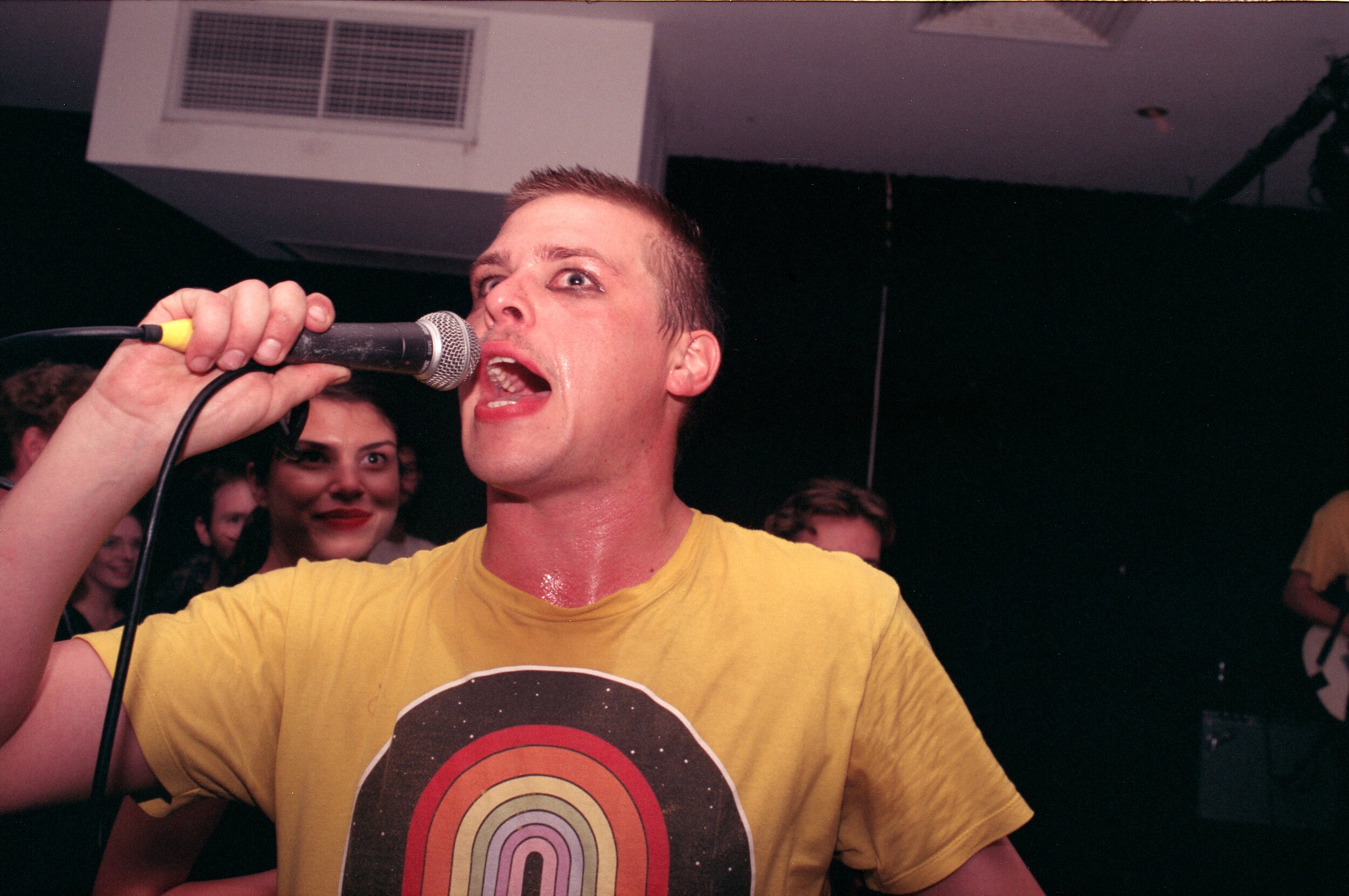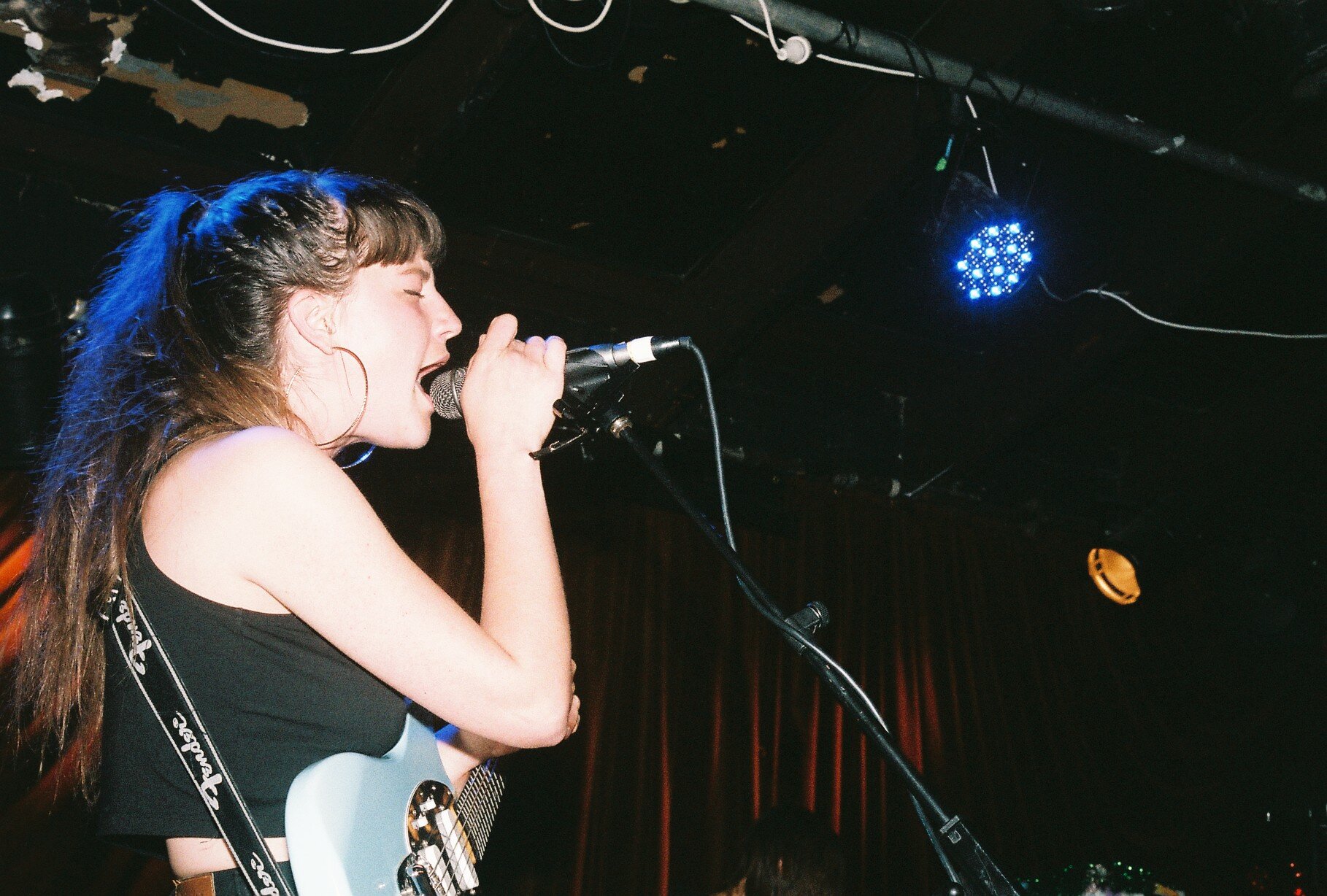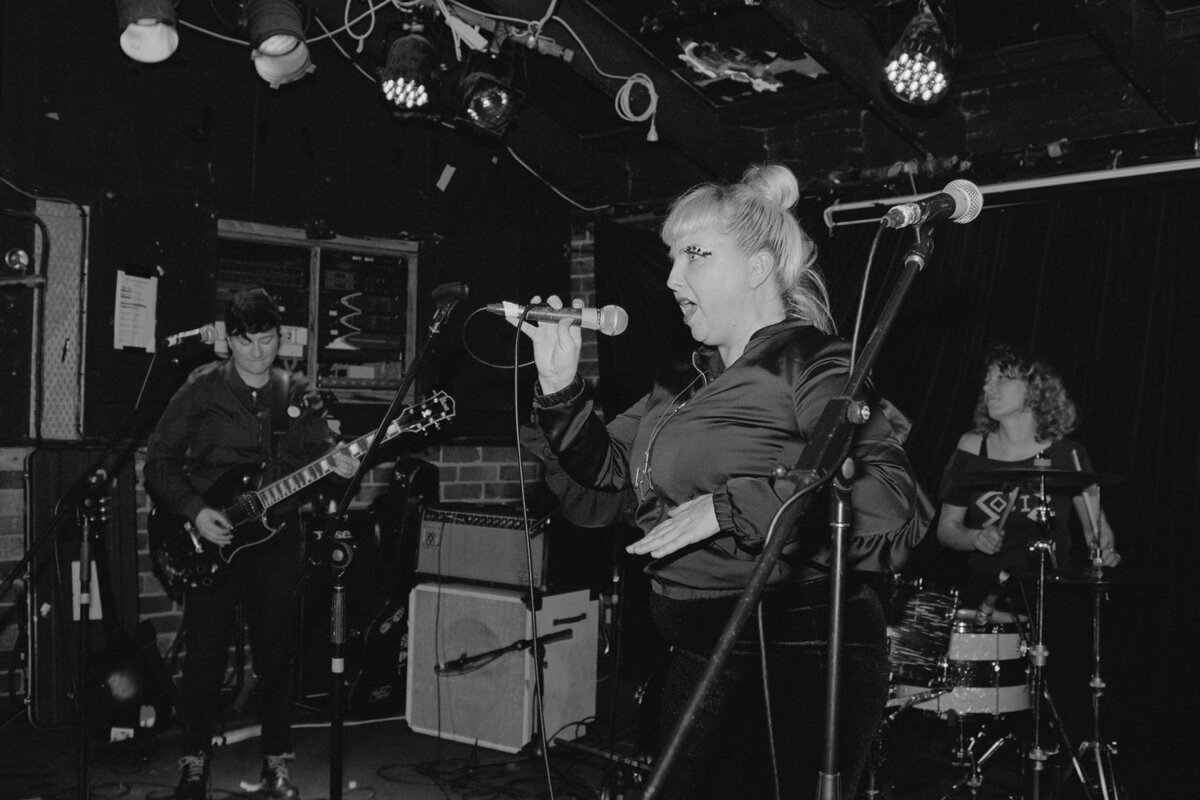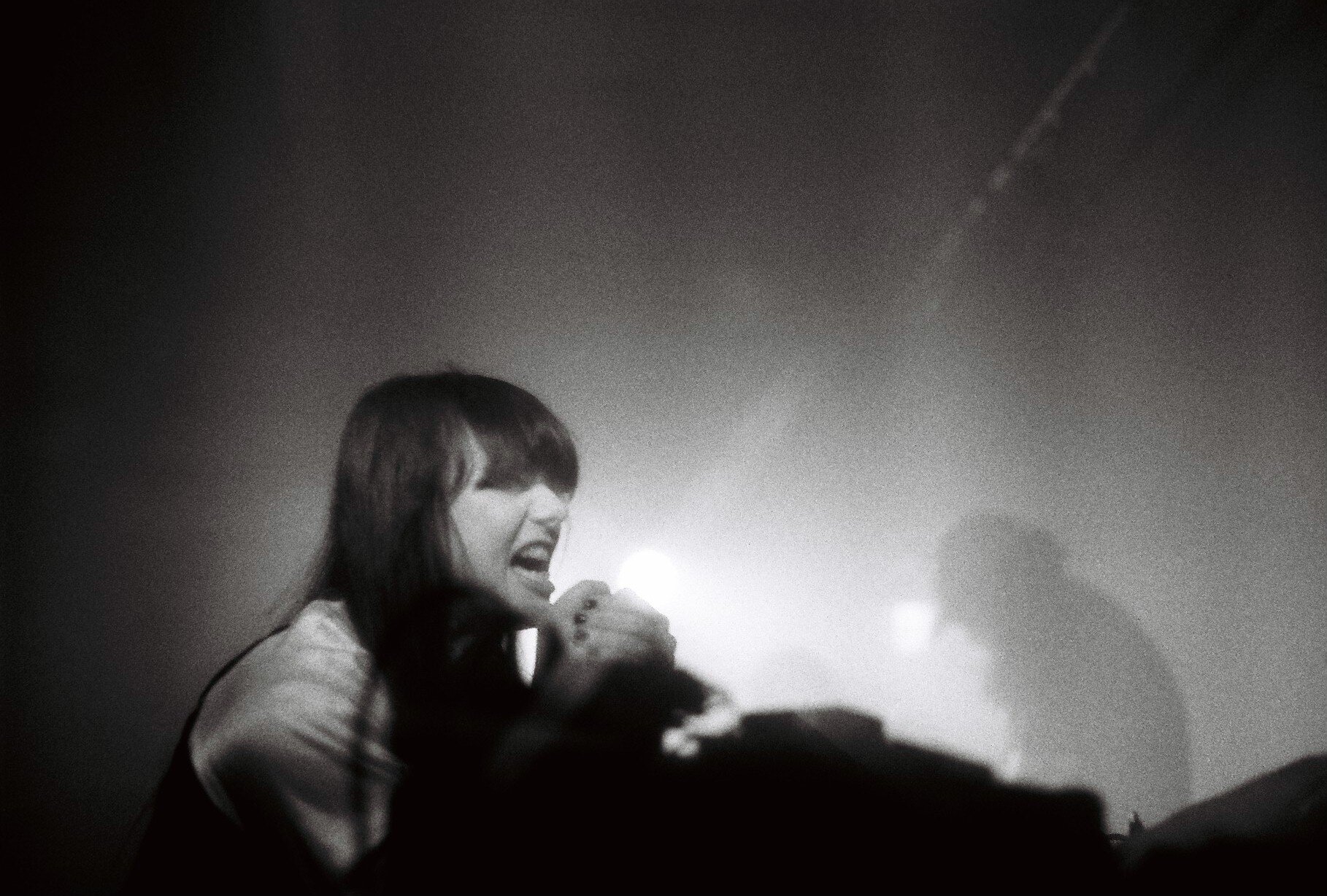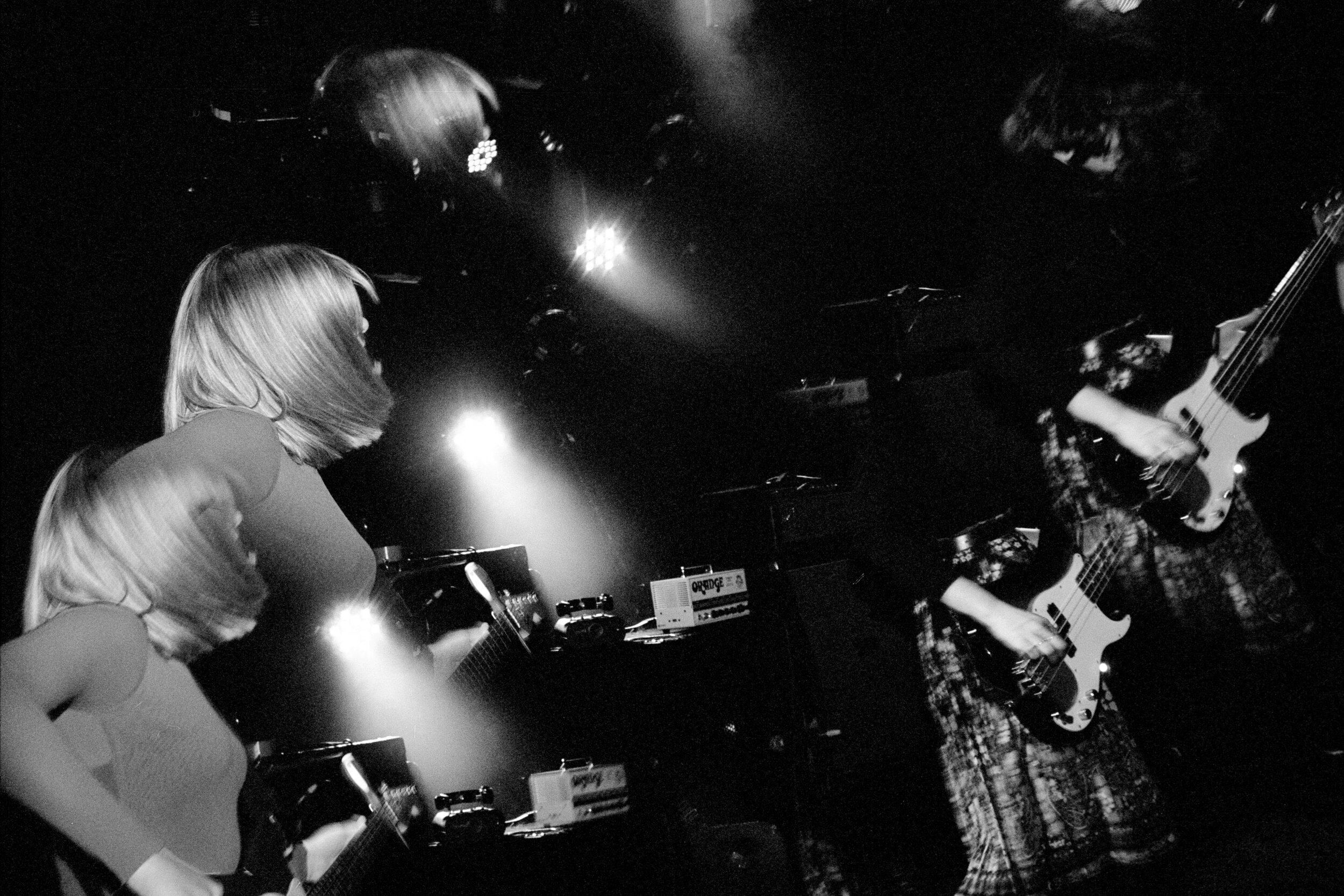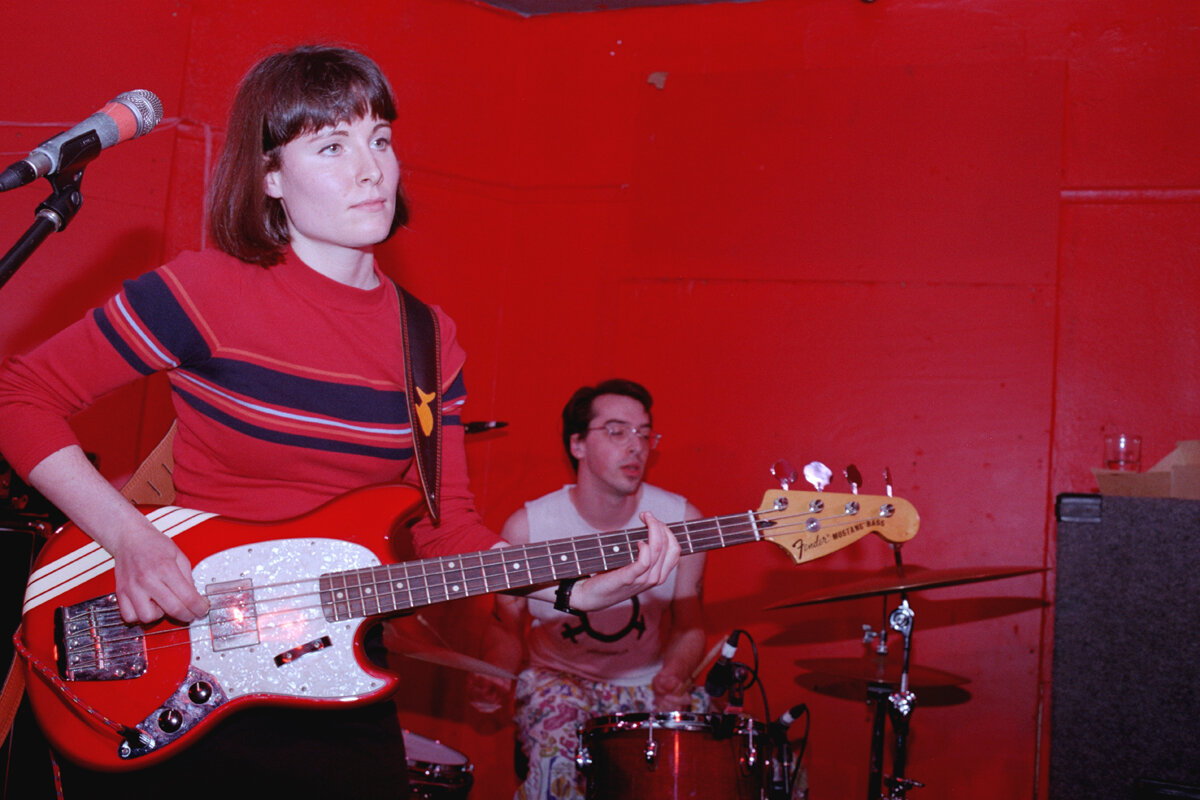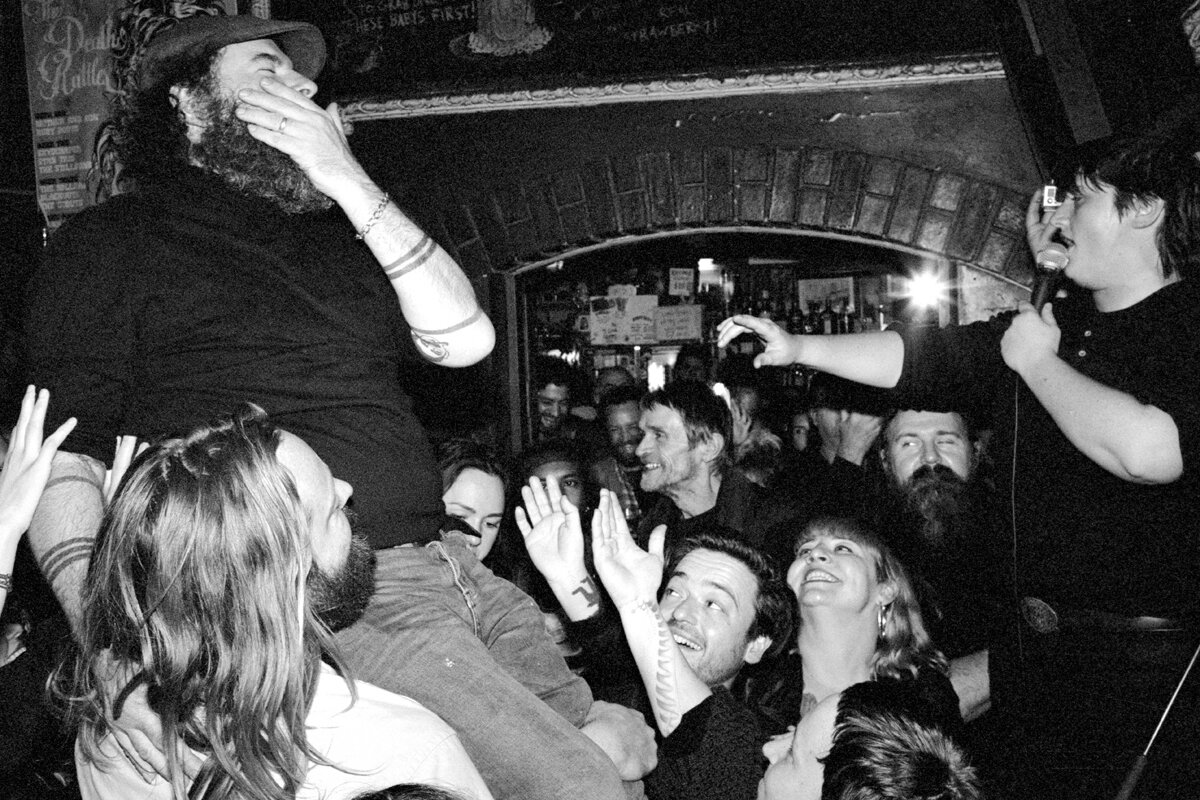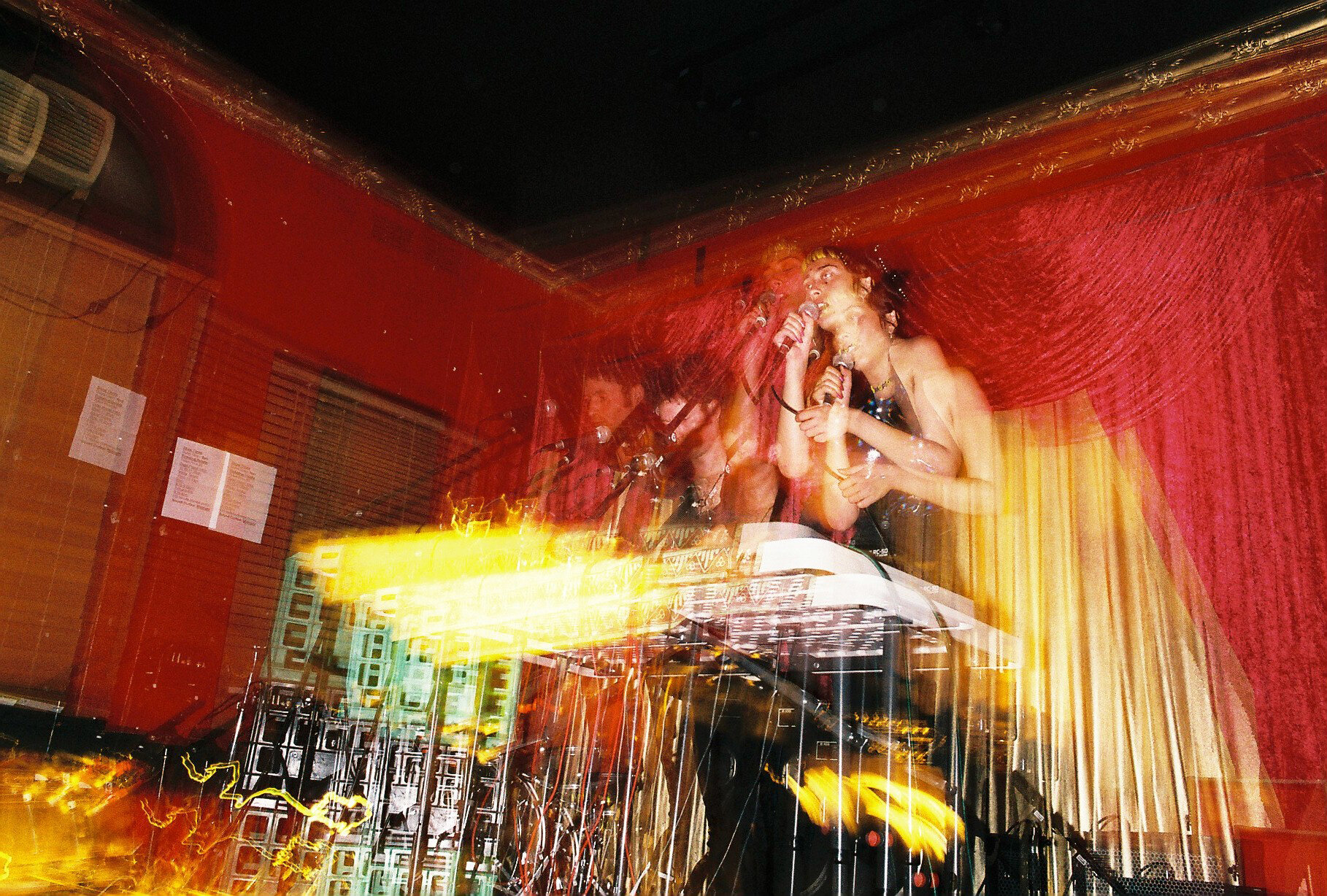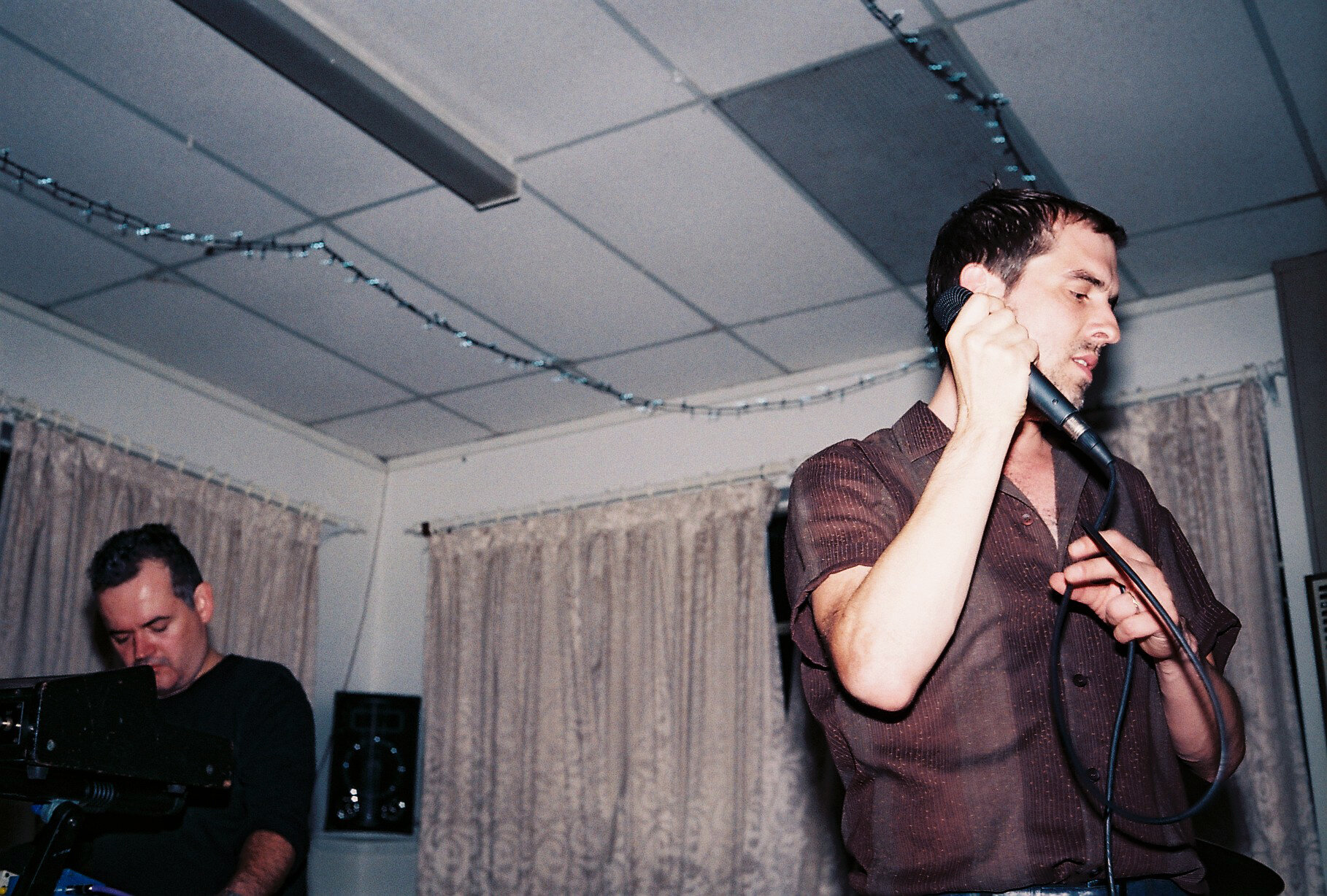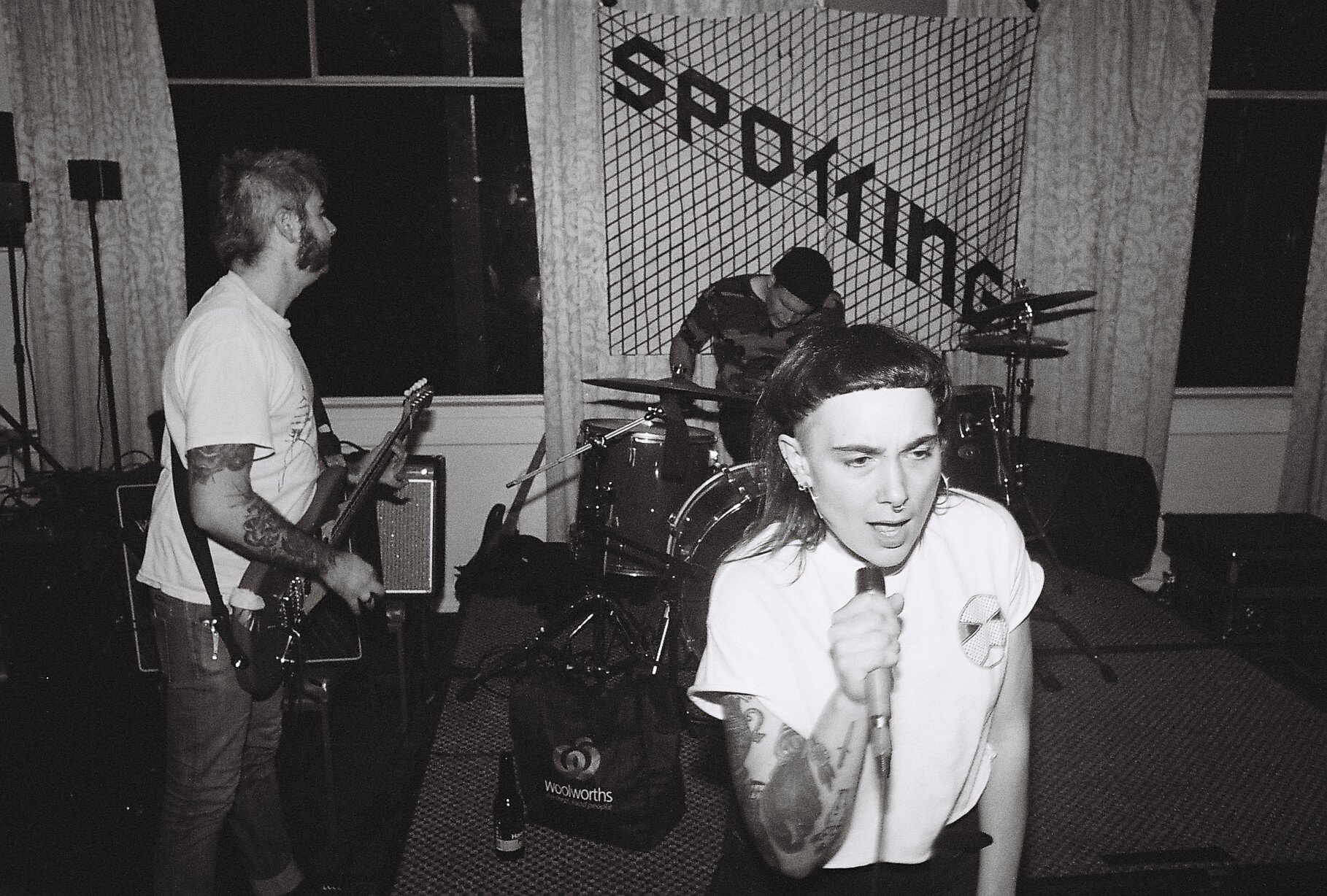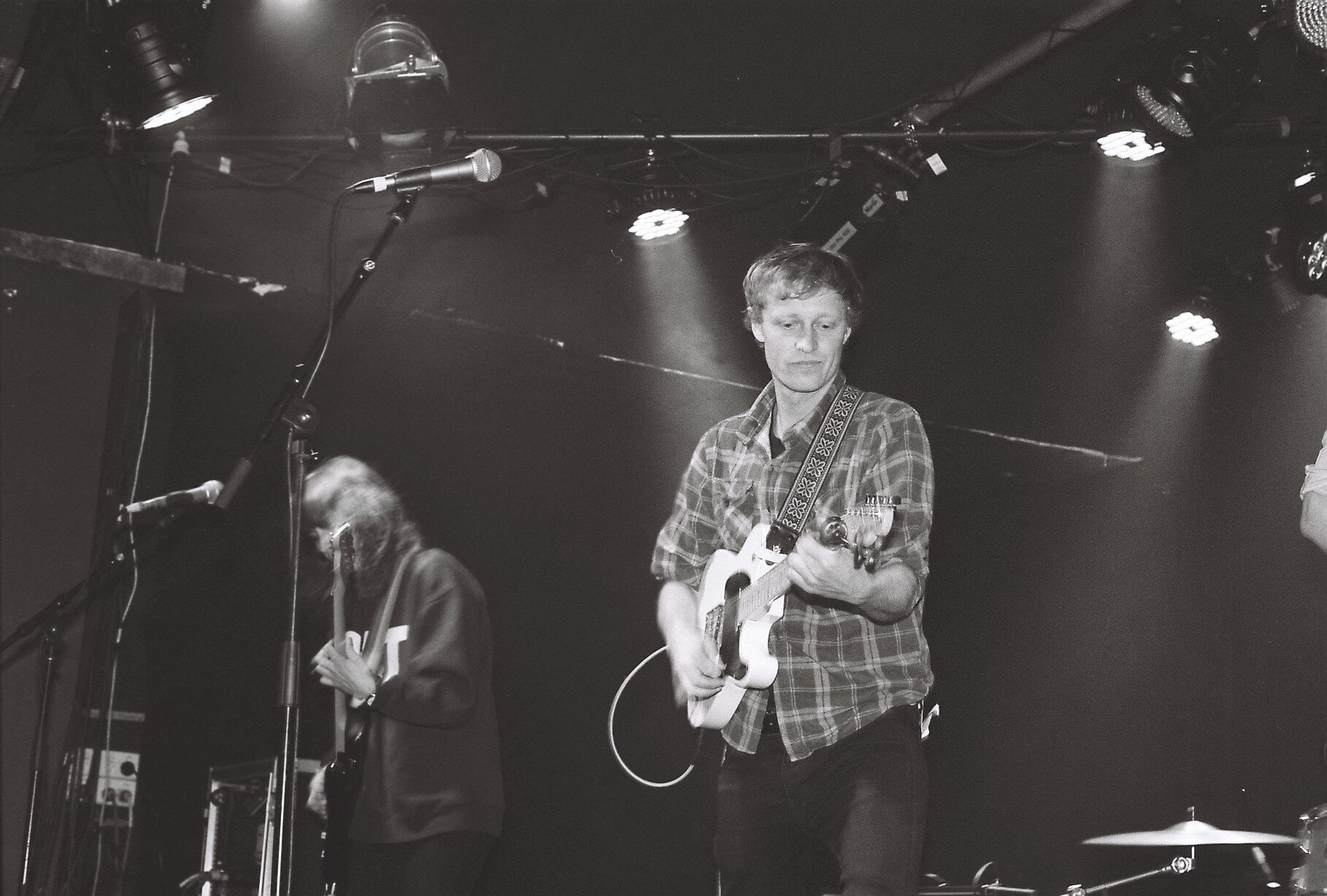Kurt Eckardt, photographer
For the last few years, Kurt Eckardt has been avidly documenting Melbourne’s independent music scene. He shared some of his images in Swampland 03.
Words Kimberley Thomson | Photos Kurt Eckardt | November 2017
Parsnip, the Old Bar. Photo: Kurt Eckardt.
When Kurt Eckardt started taking a camera to gigs, it was mainly as a way to distract himself. Having recently arrived in Melbourne from Sydney, he was trying to stave off the raw feelings that come with settling in to an unfamiliar place and it felt good to hold something in his hands, instead of just a pint.
That was about three years ago, and these days, Eckardt is a familiar fixture of the Melbourne music scene. He can often be seen scurrying across the front of a stage, crouching low with his Pentax and trying his best—perhaps in vain—to keep his six-foot- two figure inconspicuous. He has amassed a huge collection of images over the last few years—of which the following are just a fraction.
As well as the photos, Eckardt also has a hand in two music projects, Astral Skulls and Heat Wave (both with partner, and fellow photographer, Kalindy Williams), and a zine distro and label, Psychic Hysteria. During the day, you can find him working in the office of community radio station PBS. Needless to say, he’s productive.
“I like the bits in between songs, where a guitarist just hangs their hands down and they’re staring at the foldback or something... I don’t know why.”
When we meet one day, around the corner from the radio station, Eckardt is modest about his photographic work: “I don’t actually consider myself an accomplished photographer—I just go to a lot of shows. I think it’s [more about] the quantity that I have.” But, he acknowledges his images have a distinctive character. He seems to be seeking something different to the overblown theatrics of much live music photography; his subjects, framed up-close, often look surprised or bored or distracted, rendered surreal and waxy in the bright snap of his flash. The “in-between moments” are interesting to Eckardt: “I like the bits in between songs, where a guitarist just hangs their hands down ’cause they’re waiting for someone to tune, and they’re staring at the foldback or something... I don’t know why.”
This fascination with the seemingly unremarkable could be traced to an interest in street photography. “I have hundreds of photos of brown brick houses in Preston with magnolia trees out the front. I really like taking photos of hard rubbish. I feel bad about this, but I really like taking photos of people just going about their lives—the more mundane the better.” He has his camera with him today, too: “There’s a box of sandwiches, just on the street down there, and I had to go back and take a photo... it’s silly.”
Eckardt started taking a camera to shows at the urging of Williams, who is a prolific fashion photographer, and she remains an influence: “She’s so important; she’s an incredible photographer. She’s basically taught me everything I know—including just how to use the camera ... but [also] with my confidence in sharing stuff.” Occasionally, the pair can be seen shooting gigs together, communicating in knowing glances from opposite corners of the stage.
He says he’s not driven by the need to document, but rather by an affection for his subjects, who are, more often than not, not particularly high-profile bands. He also mentions a kinship with other prolific Melbourne music photographers such as Zo Damage and Naomi Beveridge.
Recently, Eckardt has started to do more set-up shoots, and there’s a temptation to move the photographic goal posts, but he says he is hesitant to take on projects simply for money, such as shooting large festivals: “I just don’t know if I want to. I could be at the Old Bar that night, you know, taking photos of bands I like.”
Cable Ties, the Grace Darling. Photo: Kurt Eckardt.
KT Spit, Howler. Photo: Kurt Eckardt.
Time for Dreams, Northcote Social Club. Photo: Kurt Eckardt.
Bahdoesa, the Tote. Photo: Kurt Eckardt.
Terry, the Thornbury Bowls Club. Photo: Kurt Eckardt.
This story first appeared in Swampland issue three.




